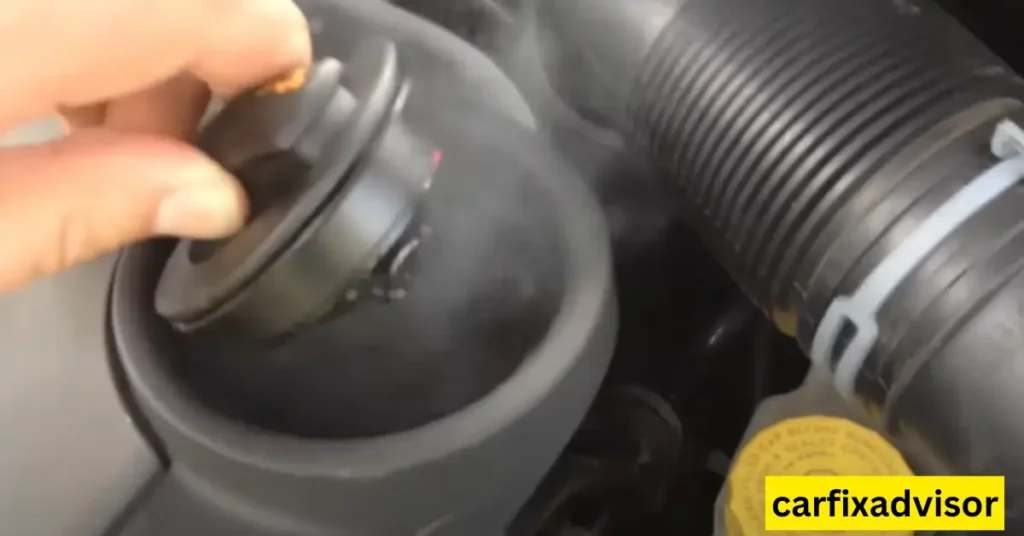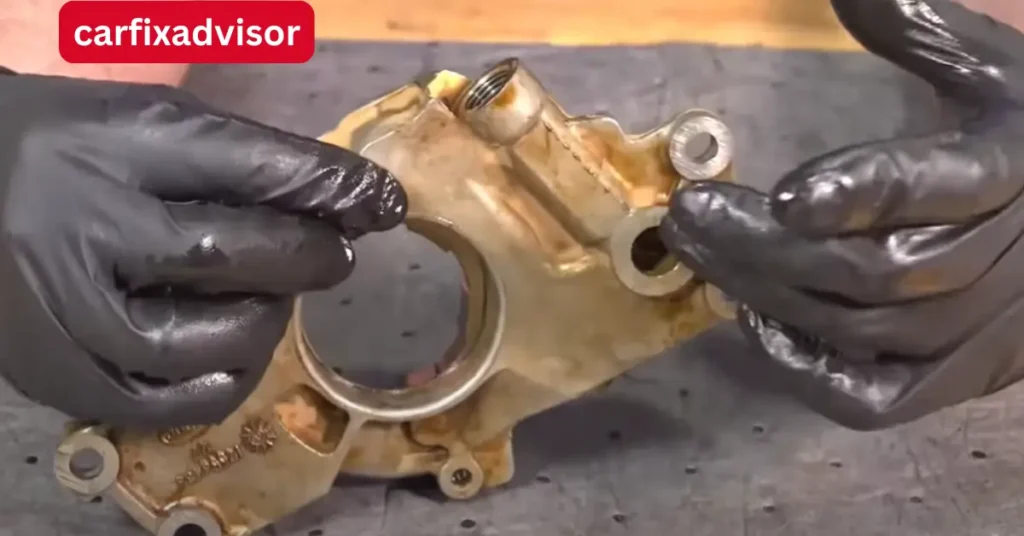If you’ve ever noticed that your car’s oil pressure drops significantly at idle when the engine is warm, you might be wondering what’s causing this issue and how to resolve it. While this can seem like a minor issue, a drop in oil pressure at idle, especially when the engine is hot, can be a sign of underlying problems that need attention. In this article, we will explore the causes of oil pressure loss Why Oil Pressure Drops at Idle When Warm and How to Fix It, potential consequences if left unchecked, and the steps you can take to fix the problem.
What Is Oil Pressure and Why Is It Important?
Oil pressure is one of the key indicators of engine health. It refers to the pressure generated by the oil pump, which circulates oil throughout the engine. This oil lubricates critical engine components, such as the pistons, crankshaft, and valves, reducing friction and preventing damage.
Maintaining optimal oil pressure ensures the engine runs smoothly, avoiding overheating, premature wear, and component failure. However, if the oil pressure drops, especially when the engine is at idle and warm, it can lead to more serious issues that affect the engine’s longevity and performance.
Understanding Oil Pressure Behavior at Idle
At idle, engine speed is low, which means the oil pump is circulating oil at a slower rate. Under normal conditions, oil pressure is still maintained at an adequate level, but it naturally decreases as the engine slows down. This is especially true when the engine oil gets warmer, as the oil becomes thinner, which lowers the pressure.
In some cases, however, oil pressure may drop too much when the engine is warm. This can trigger the check engine light or oil pressure warning light, and it may be a cause for concern. Understanding the common causes of this behavior can help diagnose and address the issue early on, preventing further damage.
Common Causes of Oil Pressure Dropping at Idle When Warm
Several factors can contribute to a drop in oil pressure at idle, particularly when the engine is warm. Let’s take a closer look at the potential causes and how they affect your vehicle’s performance.
1. Low Oil Level or Oil Quality
One of the simplest causes of low oil pressure is a low oil level. If the oil level drops too much, the oil pump may not be able to circulate oil properly, especially at lower engine speeds. When the engine is warm, the oil thins out, and the oil pump may struggle to maintain adequate pressure.
Additionally, if the oil is old or has degraded, its viscosity will decrease, and it won’t perform as effectively. This can result in lower oil pressure, particularly at idle when the engine is under less load.
-
What to do: Always check the oil level and top it off if necessary. If the oil is dirty or old, it may need to be changed. Regular oil changes, following the manufacturer’s recommendations, can help maintain optimal oil pressure.
2. Worn Oil Pump
The oil pump is responsible for circulating oil throughout the engine. Over time, the pump can wear out, reducing its ability to maintain the proper oil pressure. If the pump is old or damaged, it may not be able to generate enough pressure, particularly at idle when engine speed is low. This can result in a significant drop in oil pressure when the engine is warm.
-
What to do: If you suspect a worn oil pump, it’s best to consult a mechanic for an inspection. Replacing the oil pump is a more involved repair but is necessary to restore proper oil pressure.
3. Clogged Oil Filter
The oil filter is responsible for removing contaminants and debris from the oil. Over time, the oil filter can become clogged, restricting oil flow and leading to a drop in oil pressure. A clogged oil filter may not be noticeable at higher engine speeds, but at idle, when oil circulation slows, the pressure may drop more significantly.
-
What to do: If the oil filter is clogged, it needs to be replaced. During routine oil changes, be sure to replace the oil filter to maintain optimal oil flow and pressure.
4. Worn Engine Components
As your vehicle ages, the components within the engine, such as the bearings and pistons, can experience wear. When this happens, the clearance between these moving parts increases, which can result in lower oil pressure. This issue can be particularly noticeable when the engine is warm and at idle, as the oil has thinned and the pump struggles to maintain pressure.
-
What to do: If engine wear is suspected, an inspection from a professional mechanic is essential. Depending on the extent of the wear, the engine may need a rebuild or component replacement to restore oil pressure.
5. Oil Pickup Tube Issues
The oil pickup tube is responsible for drawing oil from the oil pan and into the oil pump. If the oil pickup tube becomes cracked or damaged, it can cause the pump to suck in air rather than oil, leading to a drop in oil pressure. This issue can be exacerbated when the engine is warm, as the metal components expand and create gaps that allow air to enter the oil system.
-
What to do: If you suspect an issue with the oil pickup tube, it may need to be inspected and replaced. A mechanic will need to remove the oil pan to access the tube and ensure it is in good condition.
6. Oil Pressure Sensor or Gauge Malfunction
Sometimes, the issue isn’t with the oil pressure itself but with the oil pressure sensor or gauge. A malfunctioning sensor may give a false reading, making it appear as though the oil pressure is dropping at idle. If the sensor is faulty, it may trigger the oil pressure warning light even if the pressure is normal.
-
What to do: If the oil pressure sensor is suspected to be faulty, it should be replaced. This is a relatively simple and inexpensive fix that can restore accurate readings.
 Oil Pressure Drops at Idle When
Oil Pressure Drops at Idle When
How to Fix Oil Pressure Drops at Idle When Warm
If your car’s oil pressure drops at idle when the engine is warm, it’s essential to address the issue promptly to avoid further engine damage. While some of the causes mentioned earlier may require professional repair, there are several steps you can take to identify and resolve the problem.
1. Check and Top Up Oil Level
The first and simplest step is to check your vehicle’s oil level. A low oil level is a common cause of decreased oil pressure, especially when the engine is warm. To check the oil, remove the dipstick, wipe it clean, reinsert it, and then pull it out again to examine the level.
-
If the oil level is low: Top up the oil with the correct type and grade recommended in your car’s manual. Avoid overfilling, as this can lead to other issues like oil foaming.
-
If the oil is dirty: It’s time for an oil change. Dirty oil loses its effectiveness, which can lead to pressure drops. Change the oil at the recommended intervals (usually every 3,000 to 5,000 miles, depending on your vehicle).
2. Replace the Oil Pump (If Necessary)
A worn or damaged oil pump can lead to low oil pressure, particularly at idle. If the oil pump is malfunctioning, it may not generate sufficient pressure to circulate oil effectively through the engine.
-
What to do: Replacing the oil pump is a more complex task that requires professional expertise. A mechanic will need to inspect the pump, and if it’s worn out, it will need to be replaced. While the process can be time-consuming, replacing a failing oil pump is crucial for maintaining proper oil pressure.
3. Replace the Oil Filter
A clogged or dirty oil filter can restrict oil flow, causing oil pressure to drop, particularly at idle when oil circulation is slower. Replacing the oil filter during routine oil changes is a simple yet effective way to ensure optimal oil flow.
-
What to do: If you notice a drop in oil pressure, consider replacing the oil filter. Make sure to use the correct filter designed for your vehicle. Replacing the filter during each oil change will help prevent clogging and keep oil pressure at the proper levels.
4. Inspect Engine Components for Wear
Worn engine components, such as bearings, can increase the clearance between parts and lead to a drop in oil pressure. If your engine has accumulated significant mileage, this could be a potential cause of low oil pressure.
-
What to do: If you suspect worn engine components, such as bearings or pistons, a professional mechanic will need to perform an inspection. Depending on the extent of the wear, repairs may include replacing bearings or even rebuilding parts of the engine. Catching this issue early can prevent more serious damage down the road.
5. Check and Replace the Oil Pickup Tube
The oil pickup tube draws oil from the oil pan into the oil pump. If this tube is cracked or damaged, the oil pump may start sucking in air, which causes a drop in oil pressure. This issue may become more pronounced when the engine is warm, as the expansion of metal components may exacerbate any gaps.
-
What to do: If you suspect a problem with the oil pickup tube, it will need to be inspected and replaced by a mechanic. This process typically involves removing the oil pan, which can be labor-intensive but necessary for addressing low oil pressure.
6. Replace the Oil Pressure Sensor or Gauge
Sometimes, the problem isn’t with the actual oil pressure, but rather with the oil pressure sensor or gauge. A faulty sensor may give inaccurate readings, causing the check engine light to turn on even if the oil pressure is normal.
-
What to do: If the oil pressure sensor is malfunctioning, it should be replaced. This is a relatively easy and affordable repair that can fix the false readings and restore accurate oil pressure monitoring.
 Oil Pressure Drops at Idle When
Oil Pressure Drops at Idle When
Preventive Measures to Maintain Proper Oil Pressure
Once you’ve fixed the issue causing the oil pressure to drop at idle when warm, it’s important to take preventive measures to ensure this problem doesn’t occur again. Here are some tips for maintaining proper oil pressure:
1. Follow a Regular Oil Change Schedule
One of the most effective ways to prevent oil pressure problems is to keep up with regular oil changes. Old or degraded oil loses its ability to lubricate and maintain pressure effectively. Stick to the recommended oil change intervals for your vehicle, typically every 3,000 to 5,000 miles, or as specified in your owner’s manual.
2. Monitor Oil Levels Frequently
Make it a habit to check your vehicle’s oil level regularly. A sudden drop in oil can lead to low oil pressure, especially at idle. Keeping an eye on oil levels allows you to catch any issues early before they cause major problems.
3. Use the Correct Oil Type and Viscosity
Using the wrong type or viscosity of oil can affect oil pressure. Always refer to your car’s manual to ensure you’re using the recommended oil type and viscosity. In hot weather, thicker oils may be needed, while thinner oils are more suitable for colder conditions.
4. Address Engine Wear Early
As your engine ages, components like bearings and seals may start to wear. Regularly inspect the engine for signs of wear, such as increased engine noise or a drop in oil pressure. Catching these issues early allows for easier repairs before they escalate into major engine problems.
5. Replace the Oil Filter Regularly
The oil filter is crucial for maintaining clean oil, and it should be replaced regularly. Over time, the filter can become clogged with contaminants, restricting oil flow and lowering oil pressure. Be sure to replace the oil filter with each oil change to maintain proper oil circulation.
6. Inspect the Oil Pump and Pickup Tube
Periodically, it’s a good idea to have the oil pump and oil pickup tube inspected. While these components don’t need to be replaced often, keeping them in good working order is essential for maintaining oil pressure. If you experience issues like low oil pressure at idle, these components should be among the first things you check.
Conclusion: Oil Pressure Drops at Idle When Warm
A drop in oil pressure at idle when the engine is warm can be caused by a variety of issues, including low oil levels, worn engine components, a faulty oil pump, or a clogged oil filter. While the problem may seem minor, ignoring it can lead to serious engine damage over time. By understanding the common causes and addressing the issue early, you can restore proper oil pressure and avoid costly repairs.
To prevent future issues, be proactive about regular oil changes, monitor oil levels, and keep your engine in top condition. If you’re unsure about the cause of the problem, it’s always a good idea to consult a professional mechanic to diagnose and fix the issue. Keeping your oil pressure in check is one of the best ways to ensure your engine continues to run smoothly for years to come.
